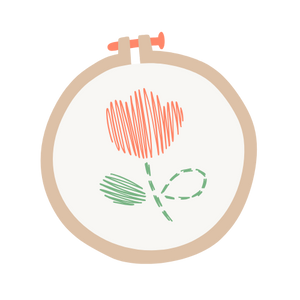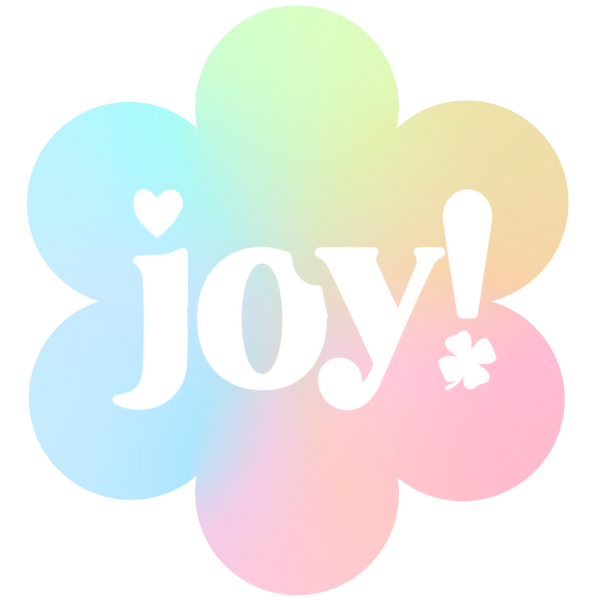Fast & tracked delivery
Your dose of creativity arrives quickly at your home, you can track your package right to your mailbox.
🚚 FRANCE MONDIAL RELAY : retard de livraison possible en raison de la mobilisation des agriculteurs 🚚

👉 In 2026, DIY will be more inclusive, personalized, and inspiring than ever : a global movement where everyone invents their own creative universe.
More than just a hobby, DIY is becoming a social phenomenon , driven by both the general public and creative leisure professionals. After the boom of the lockdown years, the trend is not slowing down: according to the Créations & savoir-faire trade fair, more than one in two French people took up a new manual activity in 2020 (source: bpifrance-creation.fr ).
As we enter 2026, the craft sector continues its transformation around strong values and inspiring innovations. Sustainable materials, revisited techniques, the influence of social networks, well-being, and even cultural hybridization are shaping the major DIY trends of the future .
The major international trade fairs also confirm this diversity: the 2026 creative season will oscillate between modern romanticism , rebellious creativity and an uninhibited retro style , all movements that reflect our aspirations and transform the world of handmade products.
Overview of the major inspirations that will mark creative workshops in 2026:

Faced with environmental challenges, the planet is now invited into every workshop . Eco-responsible craftsmanship is experiencing spectacular growth: creators and amateurs are seeking to work with sustainable, recycled or second-hand materials to limit their impact.
This green consciousness takes a very concrete form: upcycling . Transforming what already exists becomes as much a reflex as it is an act of activism. Renovating a vintage piece of furniture, sewing a tote bag from a forgotten shirt, embroidering patterns on a second-hand jacket... Each action gives a second life to the materials and gives the objects a unique authenticity .
In sewing and decoration workshops, the trend is clear:
“Handmade objects appeal to a wide audience because they provide pleasure and pride, while responding to an ecological aspiration to create from existing materials,” emphasizes Bpifrance.
Eco-creativity is thus at the crossroads of beauty and goodness : it values imagination while being part of a responsible approach.
This dynamic isn't limited to individuals. Designer markets and DIY fairs are increasingly promoting low-carbon products , while "eco-friendly" labels are multiplying. As proof of this sustainable focus, the international Creativeworld trade fair has offered an "Ethical Style" program since 2014, which promotes exhibitors committed to environmental protection.
Finally, eco-creativity also responds to an economic logic . For many young people, making things themselves represents an accessible alternative: quality, personalized creations, but without overconsumption.
👉 In 2026, the watchword is clear: wait before throwing away, and make rather than buy. Green DIY is becoming as much a lifestyle as it is a creative trend.

Paradoxically, the future of DIY is being written... by drawing on the past. The artisanal techniques of yesteryear are experiencing a true renaissance , driven by a new generation eager for authenticity. Knitting, embroidery, ceramics, basketwork: so many skills are being brought up to date thanks to contemporary designs and innovative approaches.
In 2025 already, the patchwork had found new colors with the modern quilt trend , graphic and bold.Embroidery , for its part, left its textile framework to invite itself onto paper or cardboard. In 2026, this “heritage” wave is growing:
The younger generation is enthusiastically relearning what our elders knew: crochet (including its playful Japanese version, amigurumi ), tufting-style rug weaving, reinvented basketwork... Tradition and modernity complement each other .
“Modern artists often combine classical techniques with contemporary tools, creating works that honor the past while embracing the future.”
This rediscovery is accompanied by an unprecedented creative mix. The Internet facilitates the circulation of ideas, and creators no longer hesitate to explore other cultures:
Favorite themes remain wild nature and faraway travel , proof that escape remains a major source of inspiration for the creators of tomorrow.
This hybridization feeds an infinite playground: a placemat in mottled lace becomes a bohemian accessory, a hand-sewn blouse combines African fabric and vintage European cut.
Fairs and exhibitions encourage this movement, promoting the work of local artisans and artists to preserve these precious skills in the digital age.

3D printers, laser cutters, Cricut machines… High-tech tools are no longer reserved for industrial workshops. They are now moving into our living rooms and offices , opening up a whole new world of creative possibilities.
This meeting of digital and traditional know-how is one of the major current trends. Thanks to technologies that have become accessible, everyone can transform their space into a mini-fablab . Precision cutting vinyl, laser engraving a pattern on wood, 3D printing a designer object: so many tasks that were once tedious can now be done in just a few clicks.
By 2025, more than 78,000 creative arts stores worldwide were using Shopify , already integrating digital creation and AI content generation applications. This hybridization is accelerating:
AI is already making its way into workshops. Designers are using it to generate original patterns , test new color palettes, or customize a project in real time.
Some brands even offer interactive platforms where the user can:
On-demand video tutorials, augmented reality courses, online support communities: technology is lowering the barriers to entry. Beginners and experts alike have access to ongoing, inclusive training, 24/7.
Yet technology doesn't eliminate the artisanal spirit. It amplifies it . A 3D-printed vase can be hand-painted, while traditional embroidery can be first drawn on a tablet and then executed on fabric.
👉 In 2026, digital technology gives wings to creativity, but it is still the imagination and the hand of the craftsman that hold the final brush.
@joy.cadeaux Just you, your brushes, and zero noise… Who else finds it so relaxing? 🎨 #asmrart #asmrpainting #acrylicpouring #pouringart #diyrelax
♬ original sound - Joy Gifts
It's impossible to talk about DIY trends without mentioning social media . TikTok, Instagram, and Pinterest now dictate a large part of creative trends. Every day, thousands of tutorials, reels , and pins reveal new ideas that can go viral in the space of a weekend.
This global visibility has propelled once-confidential practices to the forefront. Tufting , for example, owes its success to short, hypnotic videos showing wool spurting from the gun. The “ tiny worlds ,” these meticulously assembled mini-worlds, have won over Internet users fascinated by their patience and attention to detail.
Social media has given rise to a generation of DIY star creators . These enthusiasts share their work, build fan communities, and collaborate with craft brands. Many even launch their own product lines.
The phenomenon is massive: the handmade market is constantly renewing itself to keep pace with online trends – embroidery on jeans, epoxy resin, zero-waste sewing, etc.
👉 In sewing alone, there were recently more than 1,700 young influencers modernizing the image of this practice, which was considered old-fashioned just a few years ago.
The result: sewing or knitting has become “cool” again for those under 30, with videos racking up millions of views.
Beyond influencers, online communities play a central role:
👉 DIY version 2.0 is a global workshop without borders, where each video can inspire a creator on the other side of the globe.

Beyond the objects produced, the practice of DIY increasingly responds to a quest for well-being .
“Creative hobbies are transforming into therapeutic practices, focused on relaxation and mindfulness,” notes a trend report.
Painting, modeling, knitting, coloring… These manual gestures act as a true active meditation . We immerse ourselves in the present moment, we stimulate our senses, and little by little, tensions ease.
Adults and adolescents alike are turning to relaxing practices:
These “slow” leisure activities promote concentration and provide a lasting feeling of calm.
Research abounds: several studies establish a link between regular artistic practice and better mental health . The World Health Organization , after analyzing more than 900 publications, concludes that art really contributes to physical and mental well-being.
The democratization of art therapy is proof of this: specialized books, creative workshops and even mobile applications invite people to use creation to manage stress , anxiety or mood disorders.
In 2026, DIY will place even more emphasis on this therapeutic dimension. Several current trends already illustrate this:
Industry professionals have understood this: trade shows and boutiques are now highlighting this intangible benefit . The Créations & savoir-faire trade show , for example, has opened “Creative Escape” spaces inviting you to experiment with intuitive painting or free modeling – simply for the pleasure of letting go.
👉 Creating feels good. This is perhaps the greatest achievement of contemporary DIY: offering an antidote to modern ills, reconnecting with simple and tangible gestures, and rediscovering the joy of doing things for yourself.
Sustainability, traditions, technology, communities, well-being... Behind all these trends, one constant emerges: the affirmation of personalization and individual creativity.
In 2026, more than ever, DIY will be the expression of a lifestyle specific to each individual.
“DIY is no longer just a hobby – it reflects our personal tastes, style and values,” observes Claudia Herke, an expert at the trend agency bora.herke.palmisano.
The customer-creator is at the center. Everyone wants to create unique objects: decorate their home according to their own inspiration, offer a handmade and thoughtful gift for a loved one, or simply assert their style.
This quest for uniqueness goes hand in hand with increased inclusivity . DIY is no longer reserved for one category : men, women, children, seniors, urban or rural… everyone is getting involved. Gender stereotypes are shattered:
Even fashion is following this movement: men's shirts embroidered with flowers, suit jackets merged into unisex upcycled coats... Aesthetic boundaries are blurring in favor of creativity without labels.
According to experts at the Creativeworld show, three major styles will coexist:
👉 Three different aesthetics, but one message: freedom, individuality and sustainability.
And what if, ultimately, the big DIY trend of 2026 was this: giving meaning and beauty back to our daily lives, one creation at a time .

Your dose of creativity arrives quickly at your home, you can track your package right to your mailbox.

Got a problem? Don't panic, you have 15 days to change your mind.

Creative activities for young and old (from 0 to 77 years old!), perfect for disconnecting from screens and spending real time together.

JOY! is fun, colorful, and a touch of madness to dust off your creative leisure activities!
